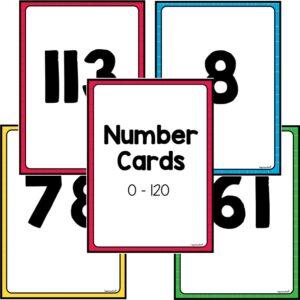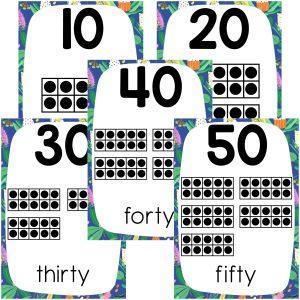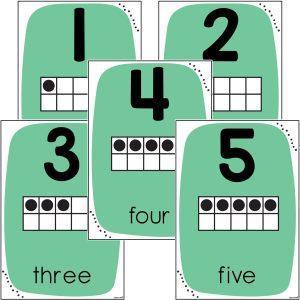Number Chart to 120

Description
Reinforce number patterns, place value and fluency with this simple and versatile resource. The Number Chart to 120 provides a practical and open-ended way for students to explore numbers and numerical relationships from both ascending and descending perspectives.
Featuring two printable versions – one from 1–120 and the other counting backwards from 120–1 – this black and white resource has been designed with flexibility in mind. Whether used for independent work, group activities or whole-class teaching, the charts support a wide range of number-based tasks aligned to the mathematics curriculum.
Students can use these number charts to practise skip counting, explore number patterns, identify number facts, and visually track addition and subtraction strategies. Add them to 'write and wipe' sleeves for reusability or have students colour directly onto the printouts for a more hands-on, visual learning experience.
Key Learning Outcomes
- ✅ Recognise and sequence numbers to 120 in both ascending and descending order
- ✅ Identify patterns in number sequences, such as skip counting by 2s, 5s and 10s
- ✅ Use number charts as a visual tool for solving number problems and exploring place value
- ✅ Develop fluency with number facts and numerical order
What’s Included
- Number chart from 1 to 120 (black and white)
- Number chart from 120 to 1 (black and white)
Materials Needed
- Printed copies of the number charts
- Pencils, highlighters or markers
- 'Write and wipe' sleeves or laminator (optional)
How to Use
- Print one or both number charts for each student or pair.
- Introduce the chart by discussing the order and structure – columns of tens, rows, and patterns.
- Use the chart in whole-class lessons to demonstrate counting forward and backward, skip counting, and identifying number patterns.
- Have students colour or highlight specific patterns, such as even numbers, odd numbers, multiples of 5 or 10, etc.
- Place charts in write and wipe sleeves and reuse them in numeracy rotations for recording number sentences, before/after activities or solving problems.
Ideas for Classroom Use
- 💡 Highlight skip counting patterns in different colours – for example, count by 2s in red, 5s in blue, and 10s in green.
- 💡 Use the reverse 120–1 chart to build understanding of counting backwards and subtraction strategies.
- 💡 Incorporate the chart into number of the day tasks – have students locate and record numbers before, after, and 10 more/less.
- 💡 Provide as a visual support during mental maths and warm-up activities.
- 💡 Turn it into a colouring challenge – students colour in all the prime numbers, square numbers or other chosen sets.
Top Teacher Tips
- 💛 Print on coloured paper or card for added durability and contrast.
- 💛 Laminate or use with 'write and wipe' sleeves to maximise reusability across multiple lessons or groups.
- 💛 Differentiate by providing targeted tasks – for example, lower students may focus on 1–30, while more confident learners tackle skip counting to 120.
- 💛 Cut the chart into rows or sections and have students reassemble the pieces to build sequencing confidence.
Whether used for warm-ups, focused lessons, revision or extension, the Number Chart to 120 is a flexible resource that brings pattern recognition, number sequencing and problem solving into clear, structured focus for all learners.
Additional information
| File Format | |
|---|---|
| Australian Curriculum Code | AC9M1N01 |
Australian Curriculum V9
F - 6
Lorem ipsum dolor sit amet, consectetur adipiscing elit.
Lorem ipsum dolor sit amet, consectetur adipiscing elit.
Lorem ipsum/ Lorem ipsum/ Lorem ipsum
Lorem ipsum dolor sit amet, consectetur adipiscing elit.
Lorem ipsum dolor sit amet, consectetur adipiscing elit.
Lorem ipsum/ Lorem ipsum/ Lorem ipsum
Lorem ipsum dolor sit amet, consectetur adipiscing elit.
Lorem ipsum dolor sit amet, consectetur adipiscing elit.
Lorem ipsum/ Lorem ipsum/ Lorem ipsum
Lorem ipsum dolor sit amet, consectetur adipiscing elit.
Lorem ipsum dolor sit amet, consectetur adipiscing elit.
Lorem ipsum/ Lorem ipsum/ Lorem ipsum
Lorem ipsum dolor sit amet, consectetur adipiscing elit.
Lorem ipsum dolor sit amet, consectetur adipiscing elit.
Lorem ipsum/ Lorem ipsum/ Lorem ipsum





